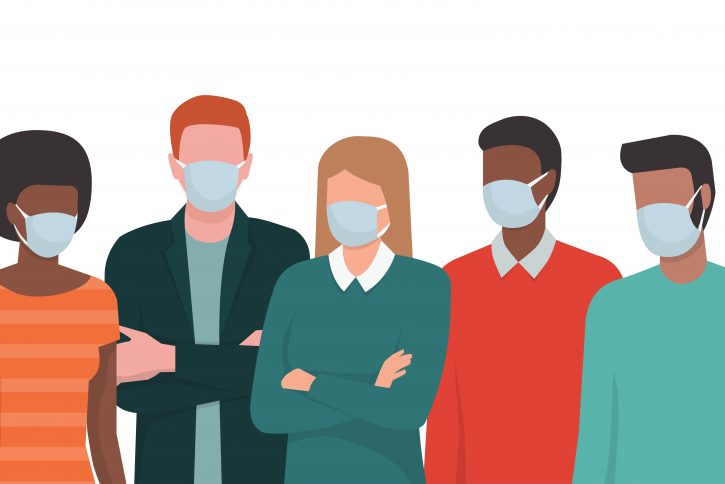
Article originally published February 23, 2021.
The distribution of COVID-19 immunizations has served as a source of hope across the globe. For many of us, the chance to be vaccinated is largely viewed as a ticket back to “normal.” Before you toss aside your mask and hand sanitizer, it’s important to realize that we may be establishing a new normal rather than returning to the pre-pandemic world we all once knew.
Continuing Protective Measures After Vaccines
Once you receive your COVID-19 vaccine, you should continue to wear a mask, practice physical distancing and wash your hands often. These preventive measures aren’t only important for you, but for those around you. Here’s why.
The vaccine does not guarantee complete immunity.
Much like the flu vaccine, one of the primary goals of vaccination is to lessen the severity of illness if you do come into contact with the novel coronavirus. This means that even though current COVID-19 vaccines have proven to be largely effective, they do not completely eliminate the chance of infection. It’s important to be particularly mindful of this in the first few weeks following the second dose of your respective vaccine: while you may be considered fully vaccinated, the body requires several weeks to ramp up immunity. The same is true of single-dose vaccines.
Protect yourself by following public health recommendations, like frequently washing hands and disinfecting shared surfaces. If you choose to gather, be sure to do so with other fully vaccinated individuals. Continue to avoid crowds and large public gatherings, particularly in poorly ventilated areas.
You may still be able to infect others.
According to the CDC, there is not enough information to know whether or not COVID-19 vaccinations decrease the transmission, or spread, of the virus. This means that you may be able to infect those who are unvaccinated even though you’ve acquired immunity and are feeling healthy.
To protect others – especially those with an unknown vaccine history – continue wearing a mask over your mouth and nose, and make an effort to maintain at least six feet of distance between yourself and others.
Herd immunity takes time.
Herd immunity simply means that enough people have been vaccinated against or infected by an illness that it can no longer effectively spread throughout a population. If a virus is unable to spread, those who have not yet received a vaccine are indirectly protected by those who have.
While the concept is simple, the science is not. The percentage of people who need to be protected in order achieve herd immunity varies by disease. For example, in order for herd immunity to be effective against measles, 95% of the population must have immunity to protect the 5% without (like newborns and those with adverse reactions to vaccines).
Currently, it is not known what percentage of the population will need to be vaccinated to achieve herd immunity against COVID-19, but it is clear that it will take time.
We should continue following public health guidelines for the next several months, regardless of whether we’re vaccinated or not.
Continue doing your part to slow the spread.
As we continue to make headway in overcoming this once-in-a-century pandemic, it is critical that we do not let our guard down. Keep doing your part to slow the spread by committing to:
- Wear a mask
- Practice social distancing
- Wash and sanitize your hands often
- Avoid touching your mouth, eyes and nose with unwashed hands
- Avoid crowds, including large gatherings, events and public transportation
- Keep your social circle small, responsible and consistent
- Stay informed with accurate, credible information
- Get your vaccine and recommended boosters when available
Click here to learn more about the most up-to-date guidelines for fully vaccinated individuals.
Sources: Centers for Disease Control and Prevention, World Health Organization